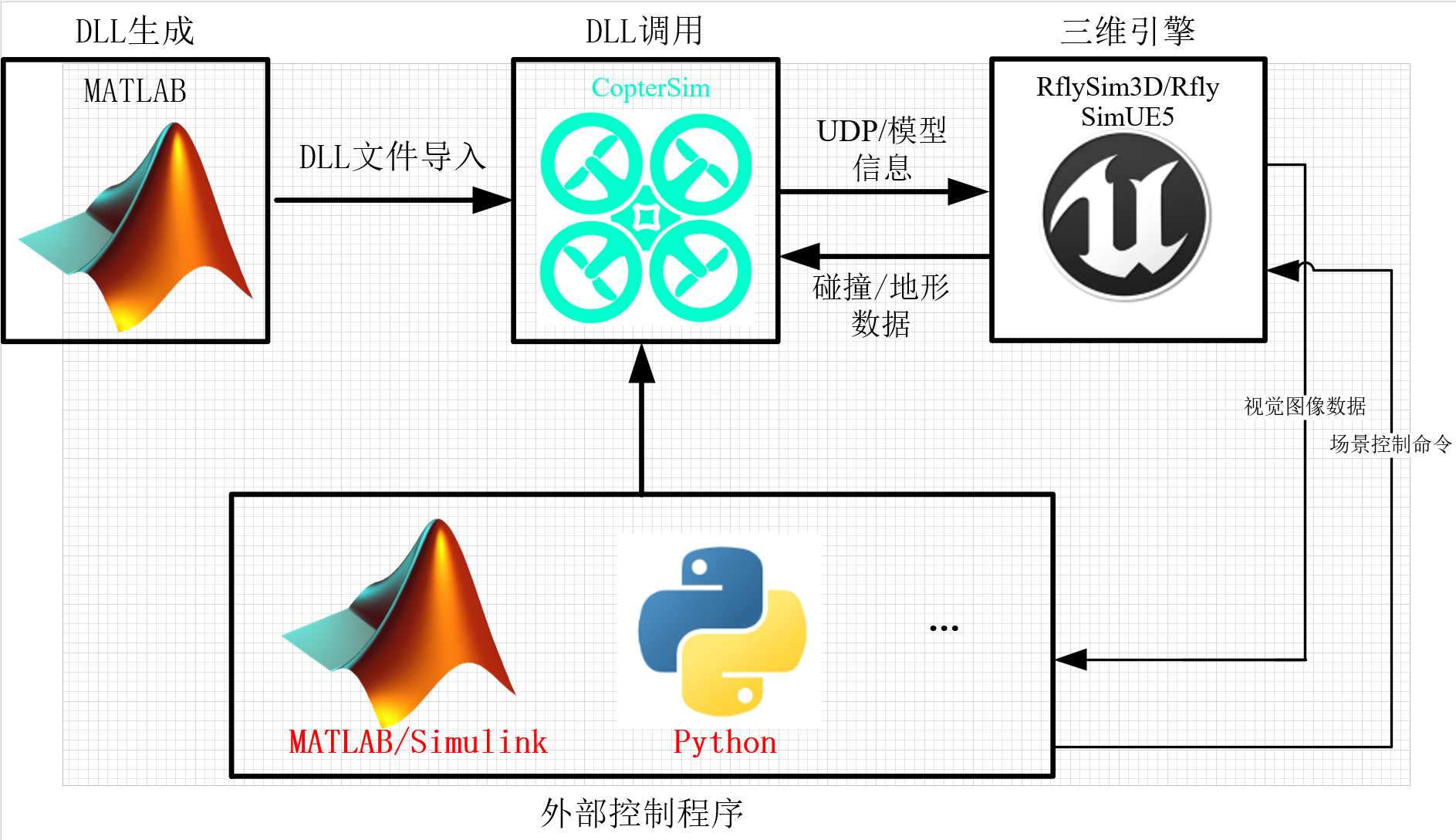3.1. How to use this chapter
The position of RflySim3D in the RflySim simulation platform is shown in the figure below:

CopterSim will calculate the current status of the drone (mainly position and attitude data) based on the motor control data passed in from Pixhawk (or PX4 SITL), and then send these data to RflySim3D, and RflySim3D will apply these data to the corresponding drone in the scene, so that we can see the status of the drone more intuitively. RflySim3D uses UDP communication and can accept some external commands, such as switching scenes, creating UAVs, and enabling the built-in physical collision of the UE. The details of the commands will be described in the introduction to the interface and usage of RflySim3D. RflySim3D can accept UDP commands from CopterSim, Python, and Simulink. RflySim3D also supports some configuration through XML files, mainly using XML to configure the configuration of UAV (four-rotor, six-rotor, fixed-wing, etc.), the priority of the model in the list, the name of the aircraft, the initial position and attitude of the aircraft, the initial position and attitude of each actuator (usually rotor). You can also define the position of the camera, some obstacle components (such as pillars, rings), and so on.
In this lecture Core,Function introduction (Intro) file
The address of the introduction document for this lecture is: 🔗[Installation Directory]\RflySimAPIs\3.RflySim3DUE\Intro.pdf🔗
In this lecture, API files
In this lecture, the address of the development-related API interface platform is:🔗[Installation Directory]\RflySimAPIs\3.RflySim3DUE\API.pdf🔗
In this lecture, PPT files
The platform address of the PPT document for this lecture is:🔗[Installation Directory]\RflySimAPIs\3.RflySim3DUE\PPT.pdf🔗
All routine files in this lecture
For all routines in this lecture, please see the Readme documentation, which is located at:🔗[Installation Directory]\RflySimAPIs\3.RflySim3DUE\Readme.pdf🔗